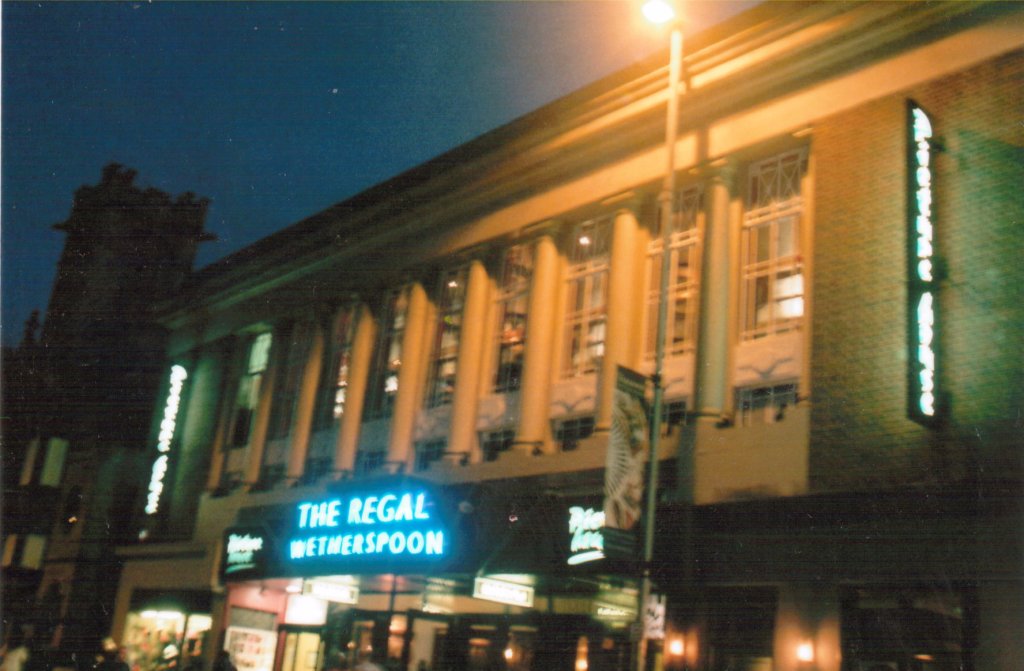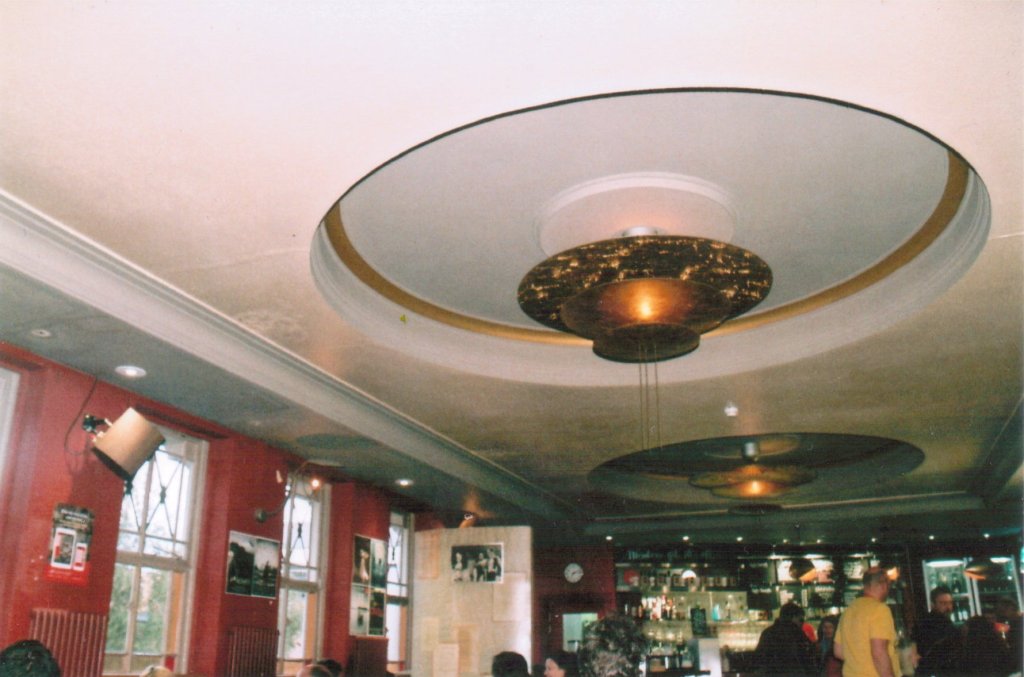I’m writing this at the time of the 2022 festival. Last year’s was my last, despite my annual support from 2008, despite that I’ve been on a scarily low income and didn’t live in the county. Hence I had made a special effort to attend the East of England’s largest fim festival, which is based at this ancient university city’s arts cinema. I would like to explain why after a little history of Cambridge’s Arts Picturehouse.

Initially, an arts cinema and theatre had been set up; the theatre remains although it’s not very arty and is as close as Cambridge gets to a theatre royal (the actual old theatre’s on Newmarket Road and is now a Buddhist centre). Cambridge had four old cinemas – the Playhouse on Mill Road, now unrecognisable as a Salvation Army shop; on Mitcham’s Corner out of the centre; on Sidney Street next to Waterstones which was a bingo hall for many years but working in the 1980s; and where I am about to take you. Originally part of a trust, it was enveloped by Picturehouses around the turn of the millennium.
I had been attending this cinema in the latter guise since 2002 – twenty years as I write this. I had seen its previous incarnation in Market Passage – I recall posters for my favourite film of all time, Elizabeth, in the late 1990s. That building became B Bar, and the arts cinema moved into a former cinema on St Andrews, where it remains.
Oddly, the cinema part was given over to the dreaded Wetherspoons pub chain which had a rough reputation, hence late night films could feel offputting for staff and patrons alike – I knew both. The latter have to go up to the cinema via a pair of stairs, so there’s no front of house or welcome, which is a mistake…just brochures – when Picturehouses did them.
The box office area has no windows, nor features, and the snacks are prominent. If you’re a member, your name flashes upon a screen that those queuing behind can see. Up more steps and you’re in the bar – the best part and the area which retains the 1930s genesis of the building. There were leaflets and a community noticeboard, but these were gradually reneged. I tried to put up a poster about my own cinema based local story, Parallel Spirals, with little interest. There is a film discussion group called Bums of Seats who put their flyer up.

The bar is quite spacious with windows along one side overlooking the street and Emmanuel college. It used to have pages of film script for wallpaper, next to strong red paint. The snack menu was given film and local names, all based on crepes. So it was affordable and pleasantly filling and I often came here whether I was seeing a film or not. People sit here with open laptops and books for hours.
Then the crepes moved out and the bar-ish menu was less appealing; chrome replaced some of the decor.
Never a cheap cinema, nor a cheap city, there sometimes feels a snootiness here, although the programming was slightly artier than Norwich, their sister: Superman got a big birthday outing, and they had some interesting back of brochure strands.
And the festival, which is very much a movable feast… I’ve attended in August to November.
This is the chief venue although the local Cineworld at Cambridge Lesuire complex – briefly a sister until forced to sell to The Light by the Competition Market Authority – and some colleges and even a church on Mill Road join in. But the best atmosphere is here in this three screener. More casual than London’s festival and easier to get tickets for, even on the day, I liked my autumn-ish sojourn, and had even written reviews for them a couple of times, although it was clear that I was limited in what I could say and wasn’t getting to see films which would have chosen.
A few times, I had written in with feedback – something they ask for, although the questionnaires are more about data harvesting than really being able to give an opinion on how you found things, such as the bowling alley feel of the foyer to the screens, which are up at least 2 more storeys than the bar, and there is nowhere to stand as it’s all on a slope. At busy times, it’s awkward; and when I did sit in the one chair due to a physical issue, I was kicked by a member of staff, who ironically was wearing a sling. No apology or recognition was given for this.
I have also complained about photography before – which is why I stopped giving my patronage to Glasgow. CFF didn’t seem to understand the legal and moral issues of being opted into public image showing, just for attending, and because they can’t be bothered to ask you.
I’ve had several poor experiences with staff experiences at the box office, some of which didn’t know their job; but then a reply from CFF let slip that all the staff had been let go during covid, so these are all very new. I wasn’t impressed as PH have been in the news before about abusing their staff, and I boycotted them for a few months in protest.
What I minded most was the tone of the replies, especially from one Owen Baker, who had only written back to me one year but clearly had been perusing my feedback for several. Companies spend huge amounts on gaining feedback, which I had given them for free, in a clear way. This included the times that staff had been rude or misleading about prices – such as the advertising issue where CFF wrote an email headed “£3 tickets for all” but then in small print after some scrolling said that it was weekday mornings only. There is actually a legal issue – for the subject line is a contract offer. It would have been easy to have added “each morning M-F” to that subject. Hence I went, the year I was battling eviction, because it was cheap and I had encouraged a friend to do likewise. I was therefore faced with either a wasted journey and not seeing any films, or to pay 3x more (if I wasn’t a member it would have been x4) to see anything. I wrote to CFF who refused any kind of refund, even a goodwill gesture. Thus I didn’t use their bar at all, which they often close during the festival for events of delegates – even though there are other spaces for them, and not us!
Owen actually told me not to come again – although I’d be missed, he advised me to take my support elsewhere. Everything about his email was unprofessional (as well as sarcastic). One email started “Well, let’s see, I try to be [polite to those who complain]…” He clearly has no idea how to speak to customers, and his boss didn’t bother to write back either.
Hence I am saving £40, 50 and above pounds on even a day at Cambridge Film Festival, and I feel sour not only about my 13 years of festivalling there (save 2020 when there wasn’t one) but all the other years I’ve met friends and watched films at the Arts. It actually makes me feel differently about Cambridge, a town I’ve mixed views on anyway.
One would think with almost three years of closure and low custom, you’d be keen to treat loyal patrons well, but these responses are rather revealing of the trust’s real values.
Happily, I not only found another film festival to attend in another area, but I’ve just had a very pleasant experience at another Picturehouse – my special favourite. I’ve already linked to it in this article. Its name rhymes with porridge.






